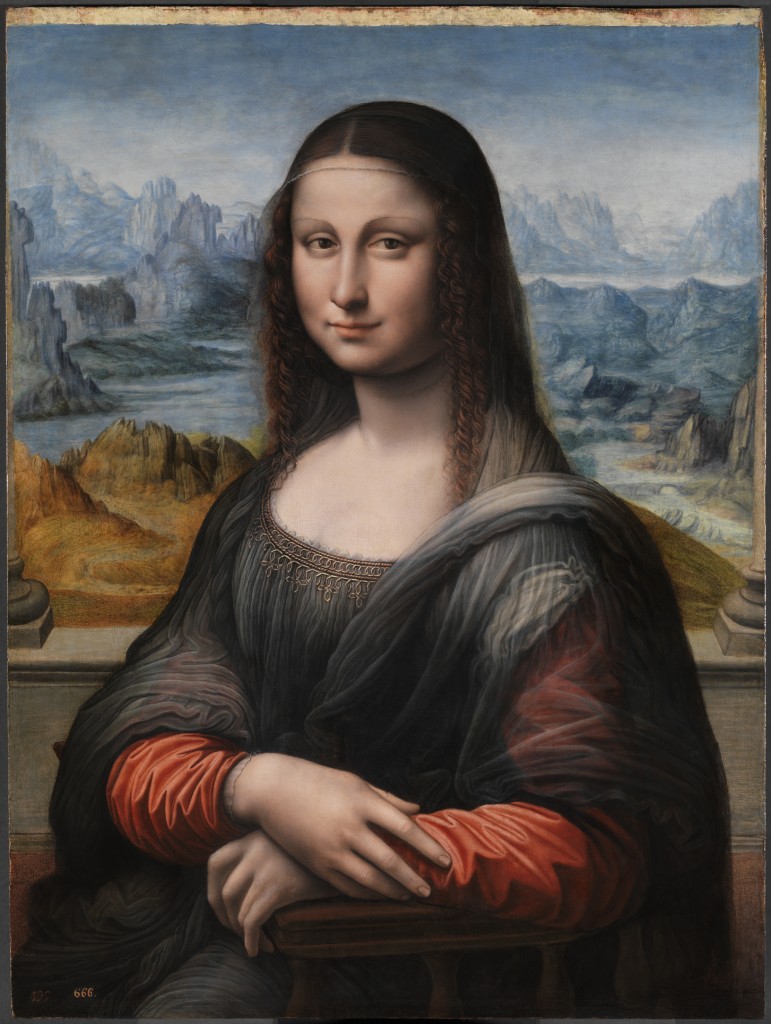Golden ratio, “the number of the beast”
There is an anecdotal formulaic relation between the golden ratio and the so-called “number of the beast“, the number “666”, which is referred to in the New Testament, in V.18 of the 13th chapter of the book of revelations: “Here is wisdom. Let him that hath understanding count the number of the beast: for it is the number of a man; and his number is Six hundred threescore and six.” The formula reads:
\( -2\sin(666°) = \varphi = (1+\sqrt{5})/2 \approx 1.6108. \)
Perhaps there is a hidden intentional mathematical relation between “Divine Proportions” and the biblical concept of the “Light Bearer”, the reference to the fallen angel who holds divine knowledge and misuses it for his own sake. The light bearer is more commonly known as Lucifer, explicited by other passages in the Bible. An interesting coincidence is the inscription of the number 666 on the bottom left-hand corner that appears in the newly found Prado museum’s replica of the Mona Lisa:
Replica of the Mona Lisa from the workshop of Leonardo da Vinci, 1503-1516, Museum of the Prado, Spain.
This painting had been restored on several occasion. The numbers 199, 666, and 392, are reference numbers which were used for inventory purposes. See http://www.museodelprado.es/investigacion/estudios/estudio-de-la-gioconda-del-museo-nacional-del-prado/. Given that Lenoardo da Vinci had a particular interest in the Golden Ratio: he described it through his illustrations of Luca Pacioli’s “De Divina Proportionae” (see http://davidsenouf.com/info/art-mathematics-a-historical-perspective/), it is rather surprising to see the number of the beast show up on the left-hand corner of this replica made in his workshop.
See “Secrets of Leonardo da Vinci’s Sacred Geometry”
The Last Supper
An artistic representation of a classical biblical theme, the Last Supper, has been revisited by the surrealist painter Salvador Dali, in 1955 in his “Sacrament of the Last Supper“: the ratio of the dimensions of this painting is equal to the Golden Ratio, and the skeleton and central geometric figure is a dodecahedron, the fifth and last of the Platonic solidswhich was associated with “Ether”, the fifth element making up all states of matter, according to Plato.


Discuss - No Comments